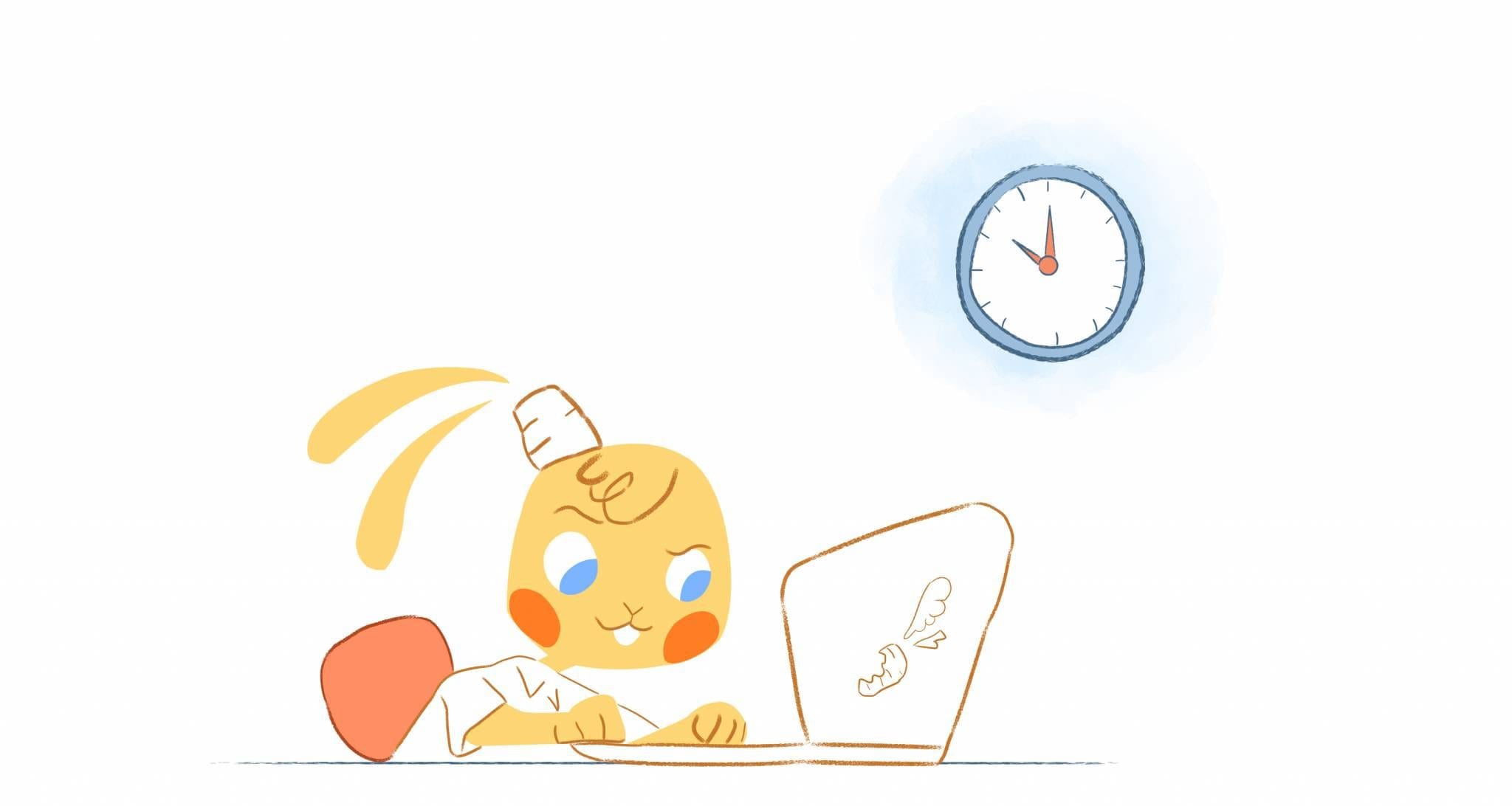

On September 6, we celebrate Fight Procrastination Day. This is your chance to deal with your procrastination problems. To be fair, each of us has felt the powerful urge to defer a critical task.
Oftentimes, procrastination is due to the daunting nature of the task or just feeling unmotivated. There are many reasons why procrastination occurs. Nevertheless, it is one of the most significant hurdles to completing tasks.
It has been proven that procrastination is related to negative functioning and mental health risks. Also, a procrastinator is more likely to be anxious and impulsive.
There is even a link between procrastination and physical illness. Procrastinators are more likely to experience stress and delay treatment, which can lead to deteriorating health in the long run.
To combat procrastination in all its forms, this observance is meant to promote efforts. With that said, here’s how you can take the fight to procrastination every September 6.
Be aware of your procrastination.
You may be putting off a task because you’ve re-prioritized your tasks. A genuinely good reason for delaying an important task does not necessarily constitute procrastination.
The opposite may be true, however. If you start putting things off indefinitely or switching your focus in an attempt to avoid something, you may be putting yourself at risk.
Procrastinating may also be caused by:
- Taking on low-priority tasks during the day.
- Ignoring an important to-do item for a long time.
- Idlely reading and not responding to emails.
- Beginning to work on a high-priority task and then doing something else, like making coffee.
- Getting distracted by unimportant tasks that others ask you to do instead of completing your priorities.
- Waiting until you’re in the “right mood” or when the “right time” comes.
Identify your top priorities.
There will always be changes to deadlines. The project may suffer from scope creep, another project may get prioritized, or your team lead may reallocate resources at the last minute.
Nevertheless, if you know what work is most important, you can manage your priorities more effectively. You will then have the clarity to deliver meaningful results when deadlines and timelines change.
Identifying your priorities is an effective anti-procrastination method because it helps you prioritize your tasks. By setting clear priorities, you can avoid doing things that aren’t important. As a result, you no longer feel like you are wasting time at work.
Organize large tasks into smaller ones.
Breaking down large tasks into smaller, more manageable ones is one of the best ways to fight procrastination. You will feel less overwhelmed and more capable when you do this. It is also easier to get started if we break a task down into smaller steps.
As an example, the following steps can be used if you need to complete a big project at work:
- Do some research on the subject.
- Make an outline.
- Get a first draft done.
- Make revisions to the draft.
- Revise the draft.
- Review the draft for accuracy.
- Get the project submitted.
You will be more likely to get started if you break the project down into smaller steps.
Fight perfectionism with goals.
The fact is that chronic procrastinators are sometimes perfectionists as well. A situation such as this may lead to procrastination due to the pressure of doing perfect work. However, perfectionism can be resolved through clarity, just like other work procrastination types.
Put an emphasis on impact.
When you struggle with perfectionism, knowing the impact of your work can be helpful. Consider completing the task at hand in the best possible way rather than striving for perfection. Specifically, we mean:
Let’s say you’re working on an educational animation for your website’s home page. The perfectionist in you is panicking at the prospect of many people seeing your work. Due to the fact that you are thinking about all of the people who are going to see the video, you are focusing on the outcome.
Rather than focusing on the video’s goals, consider its impact instead. Educating people about your company’s product is the purpose of the animation-and its impact is communication. You can reduce the pressure of perfectionism when you reorient your priorities around creating an impact.
Have your own definition of “done.”
What else can be done to combat perfectionism? What does it mean to be “done”?
For example, this technique is used in Scrum teams to move quickly. When you define what “done” means, you have a point at which you can stop working, regardless of how perfect it may be. In short, it’s always better to be done than perfect when you’re uncertain.
Don’t lose sight of the bigger picture.
Try to focus on the “long game” if you’re procrastinating due to unpleasant tasks. After all, impulsive individuals are more likely to procrastinate due to their short-term goal orientation.
You can avoid this situation by identifying the long-term benefits of completing the task. Is it possible that it could affect your annual performance review or bonus at the end of the year?
Keep distractions at bay.
Our focus is heightened when distractions are eliminated while trying to accomplish a task. To accomplish this, we must turn off our phones, close our email, and find a quiet workplace. Our ability to stay on track will be hampered by constantly being bombarded with distractions.
If you find it challenging to stay focused, try using a timer. Start the timer and work until the 25-minute mark comes on. Next, check your email or social media for five minutes. If you want to take a longer break, take 20 to 30 minutes after each 25-minute interval.
Make fewer decisions.
There is an energy consequence to every decision we make. For example, if you ask yourself each morning, “What do I need to accomplish today? “Well, it’s most likely that you’re going to procrastinate.
The more time you spend thinking about what to do and what not to do, the more likely you will waste each new day.
- Can I go to the gym today or wait until tomorrow?
- Would it be better for me to have lunch with Sue from Marketing, or should I eat a quick lunch alone so I can finish this meeting presentation?
- Is this the right outfit for me?
- What should I eat for lunch?
- When should I respond to this email?
All day, we ask ourselves similar questions.
The questions we ask compel us to respond with answers, which in turn compel us to take action. As a result, you lose self-control and feel tired, which causes you to procrastinate on what matters most to you.
You can reduce the number of decisions you must make each day by making those decisions ahead of time and/or developing habits in certain areas of your life to save time and energy by not having to think about them.
Utilize time management strategies.
Feeling motivated is easier when you have clarity. It is still possible, however, to need a little extra support sometimes to stay on track. Try time management strategies to reduce multitasking and become more productive in such a case.
- Getting Things Done (GTD) method. As you keep track of more information, you’ll be less productive and focused, according to GTD. As an alternative to relying on your brain, the GTD methodology encourages you to store all of your work information externally.
- Pomodoro technique. With the Pomodoro technique, work sessions are alternated with breaks. During a Pomodoro, you work for 25 minutes and then take a five-minute break. A long break follows four Pomodoros. You’re more likely to remain motivated if you work in short bursts.
- Time blocking. The concept of time blocking refers to a time management method of scheduling out every aspect of your day in advance. Your work week is effectively broken up into smaller chunks by time blocking, so you can check your email, work on projects, take a break, and exercise when you’re ready.
- Timeboxing. You can reduce procrastination and increase productivity by using timeboxing. Timeboxes represent the goal of finishing a particular task within a specified amount of time.
- 2-minute rule. If a task takes less than two minutes, complete it now according to the 2-minute rule. By focusing on small tasks, this methodology enables you to have more time. Additionally, you will have more brain power to concentrate on your higher-impact tasks.
Make the most of your day before it begins.
What is one of the best ways to avoid procrastination? Organize your days ahead of time.
Take a few minutes to sketch out your day instead of scrambling to figure out what you’ll do the following day.
As an example, I plan out the following for the following day before I go to bed:
- I have one big thing I need to accomplish that day (OBT). In others, this could be a big project or a goal I must complete.
- My No Matter What is (NMWs). The following could be considered non-negotiable daily habits: exercise, nature walks, reading (30 minutes minimum), and family time.
What about everything else you have to do? You can get to it the following day. Basically — this gives you plenty of time to hit your most important goals and projects — and not procrastinate on them.
Ask for help.
Do not be afraid to seek help if you struggle to overcome procrastination. Speak with a friend, relative, or even a therapist. You can get guidance and support from them.
In addition, many books and websites provide tips on overcoming procrastination, such as Procrastination: Why You Do It, What to Do About It Now by Jane B. Burka, Ph.D. and Lenora M. Yuen, Ph.D., or The Procrastination Coach.
Increase the immediate rewards of taking action.
Keeping long-term goals in sight will make procrastination easier if you can make them more immediate, suggests best-selling author James Clear. Using a strategy known as temptation bundling is an effective way to provide future rewards in the present.
Behavioral economist Katy Milkman developed the concept of temptation bundling through her research at The University of Pennsylvania. Clear suggests bundling long-term and short-term behaviors to optimize your health.
You should only do [THINGS YOU LOVE] while doing [THINGS YOU PROCRASTINATE].
An example of temptation bundling is as follows:
- While exercising, only listen to audiobooks or podcasts you enjoy.
- Get a pedicure only when you’re catching up on overdue work emails.
- Whenever you are doing household chores or ironing, watch your favorite show.
- Your monthly meeting with a problematic coworker should be conducted at your favorite restaurant.
Just start.
The biggest challenge of overcoming procrastination? Getting started.
Often, we avoid doing things because we feel intimidated or overwhelmed. It is, however, best to start if you want to overcome this challenge.
Getting the task done perfectly isn’t important. See where it takes you as you work on it. As soon as you get started, you will discover that the task is not as daunting as you thought.
Conclusion
It can be difficult to overcome procrastination, but it can be done. You can achieve your goals by applying the tips above to combat procrastination.
Additional Tips
To help you overcome procrastination, here are a few additional tips:
- Identify your triggers. What causes you to procrastinate most often? It is possible to develop strategies for avoiding your triggers once you have identified them.
- Make a to-do list. You can track your progress and stay organized this way.
- Delegate tasks. Whenever possible, delegate tasks. Doing so lets you focus on the things that matter most to you.
- Take care of yourself. Regular exercise, healthy eating, and adequate sleep are all key to staying healthy. You are better equipped to resist procrastination and focus by taking care of yourself.
Don’t forget, procrastination is a habit. To break a habit, you must be patient and persistent. It is possible, however, to overcome procrastination by following the tips above.
FAQs
What is procrastination?
The act of procrastinating is the delay or postponement of a task or set of tasks. This common problem can negatively impact our lives.
Why do we procrastinate?
We procrastinate for a variety of reasons. Among the most common reasons are:
- The fear of failure
- A feeling of overwhelm
- Having no motivation
- Perfectionism
- Feeling bored
- Having a lack of self-confidence
What is the difference between procrastination and laziness?
Although they are often confused, procrastination and laziness are two different concepts.
- When we procrastinate, we defer or postpone a task, even though we know it will have adverse outcomes. In addition to feeling stressed and anxious, procrastinators may lack motivation or fear failure, which makes them unable to get started on the task they are avoiding.
- Laziness is a lack of effort or unwillingness to work. Lazy people may not even be aware that they are lazy. They may not even feel anxious or stressed about avoiding tasks. Alternatively, they may enjoy relaxing, socializing, or pursuing hobbies instead of working.
In some cases, procrastination and laziness may coexist.
The person procrastinating on a task might also be lazy, and they might not feel motivated to start. However, procrastination is also possible without laziness, or laziness without procrastination.
What are the negative consequences of procrastination?
Among the negative effects of procrastination are:
- A greater sense of anxiety and stress
- Work performance or grades that are lower
- Failure to meet deadlines
- Issues with relationships
- Having financial difficulties
- Issues related to health
How can I avoid procrastination in the future?
You should develop good time management skills and be aware of your own triggers to avoid procrastination in the future. Procrastination can also be prevented by having a plan in place for how to deal with it.
Image Credit: Eden Constantino; Pexels; Thank you!











Deanna Ritchie
Editor-in-Chief at Calendar. Former Editor-in-Chief and writer at Startup Grind. Freelance editor at Entrepreneur.com. Deanna loves to help build startups, and guide them to discover the business value of their online content and social media marketing.